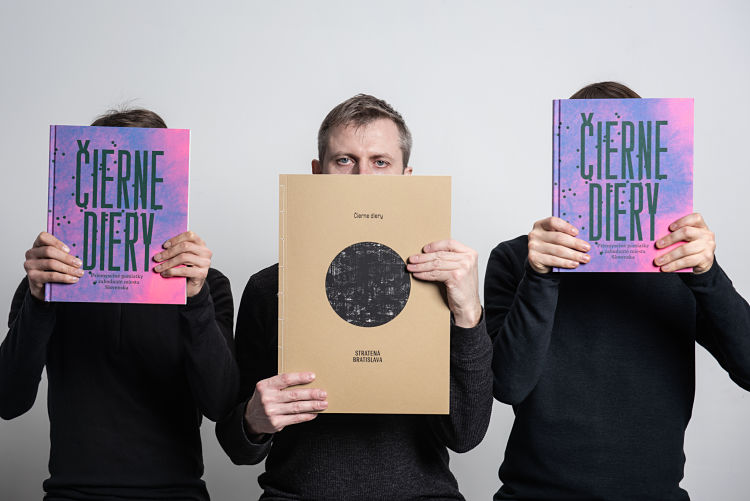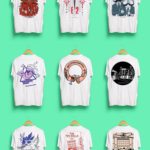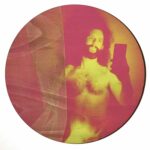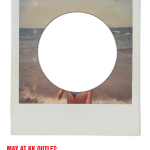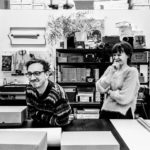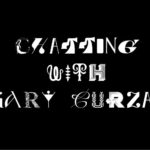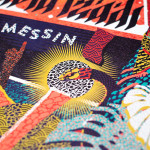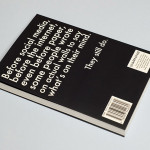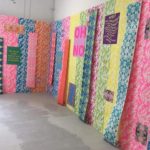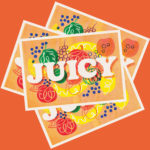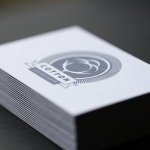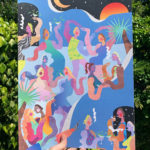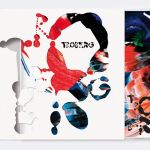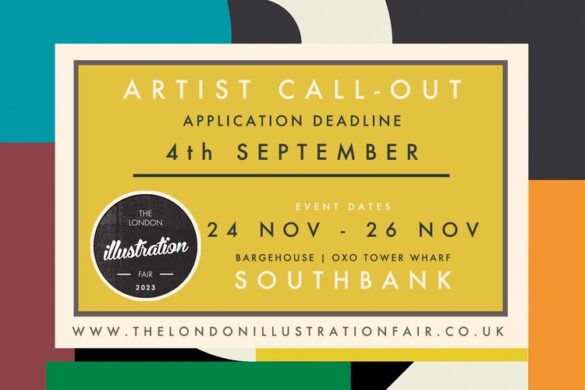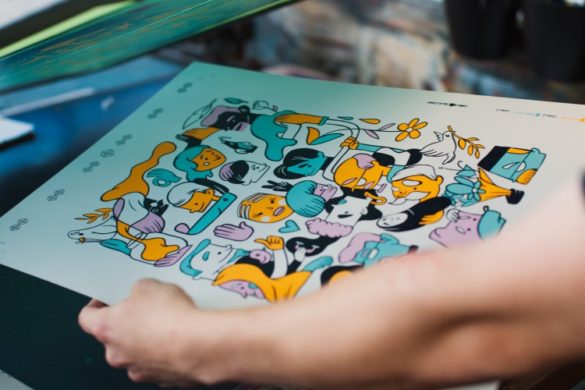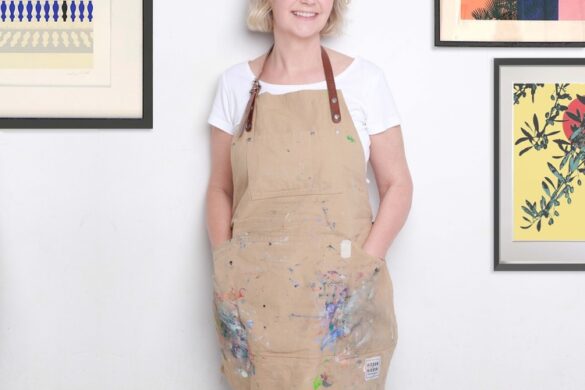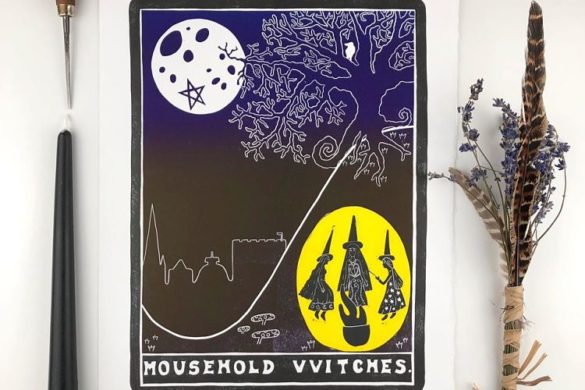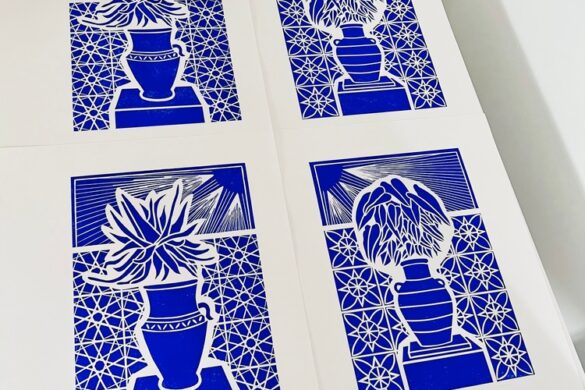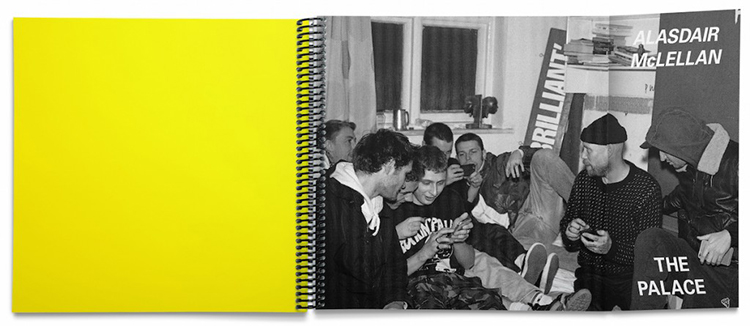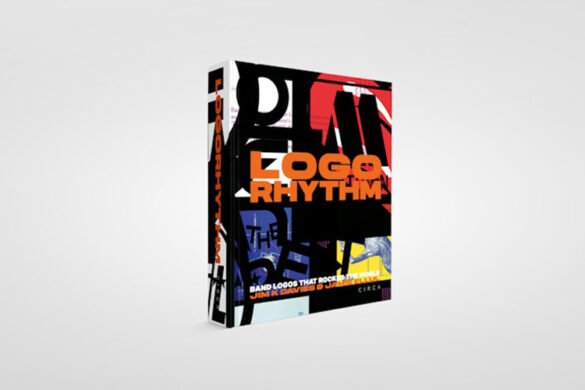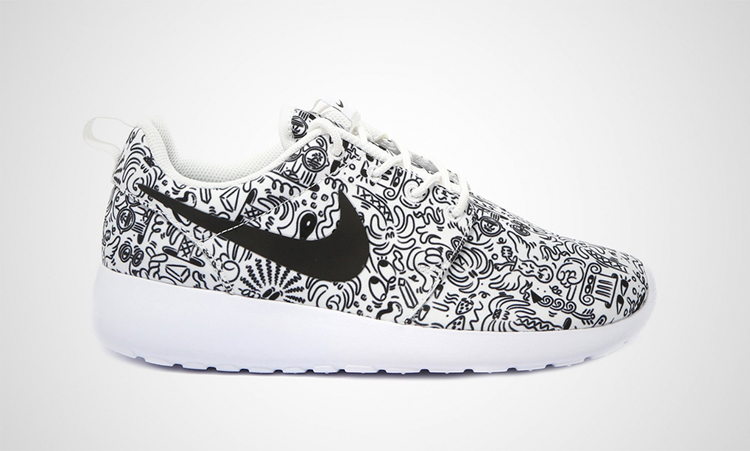Čierne Diery (The Black Holes) is a creative project that for the past six years has been engaging and connecting dozens of people and initiatives in Slovakia. As a result, Risograph prints created in collaboration with Slovak visual artists, illustrators, and graphic designers (to date more than 66 authors and 226 artworks) have now reached thousands of households. Čierne Diery’s self-published books have become independent bestsellers, and their broad community of supporters have allowed them to financially support the protection of monuments and various cultural institutions. In 2020, the year of the Covid pandemic, they donated approximately 200,000 euros to various good causes and charities, and have got involved in the world of galleries and auction houses, with the acquiring of their Risograph prints by the Slovak National Gallery.
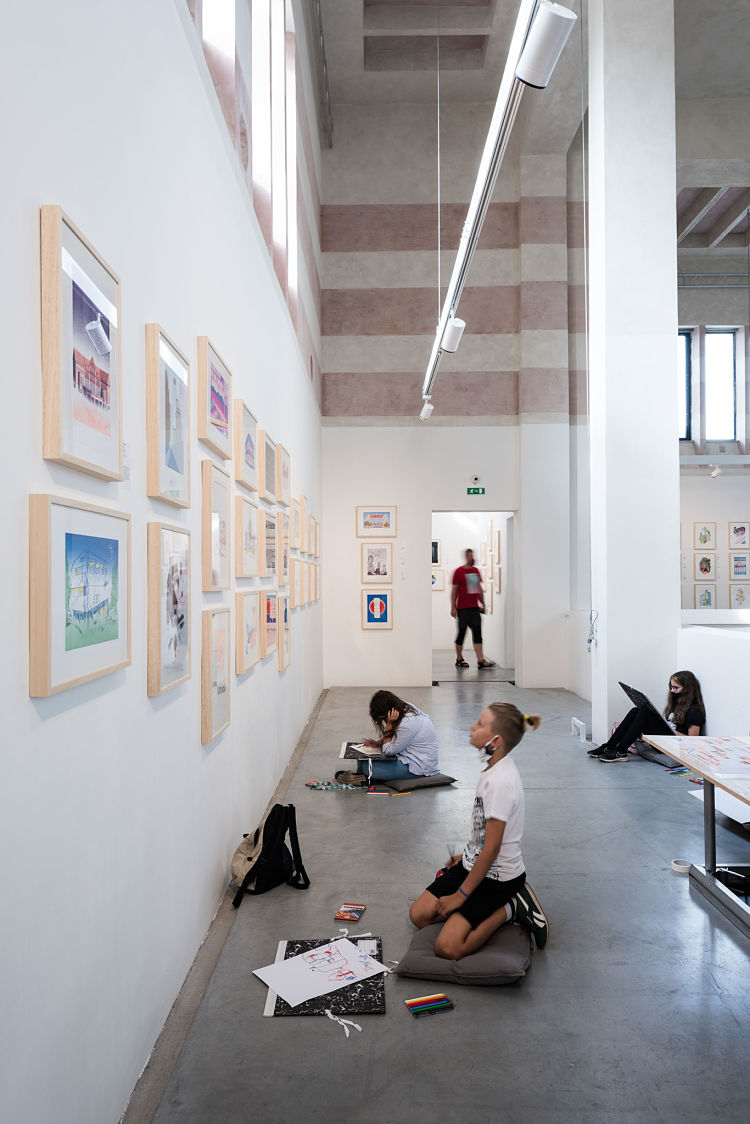 The initiative started as a spontaneous idea from three friends (now six) who wanted to promote industrial decaying monuments and architecture in Slovakia. The trio began telling stories of various buildings and factories scattered all over the country, including those in remote villages off the beaten path. Using social media, they invited the public to join a virtual informative journey, piquing their curiosity with untold details, and inspiring people to explore these less visited regions and discover new treasures. Without an exact itinerary, travellers followed the guidance of locals and spontaneously conversed with family members with connections to old factories, once well-known spas, and other abandoned places that nature has taken over.
The initiative started as a spontaneous idea from three friends (now six) who wanted to promote industrial decaying monuments and architecture in Slovakia. The trio began telling stories of various buildings and factories scattered all over the country, including those in remote villages off the beaten path. Using social media, they invited the public to join a virtual informative journey, piquing their curiosity with untold details, and inspiring people to explore these less visited regions and discover new treasures. Without an exact itinerary, travellers followed the guidance of locals and spontaneously conversed with family members with connections to old factories, once well-known spas, and other abandoned places that nature has taken over.
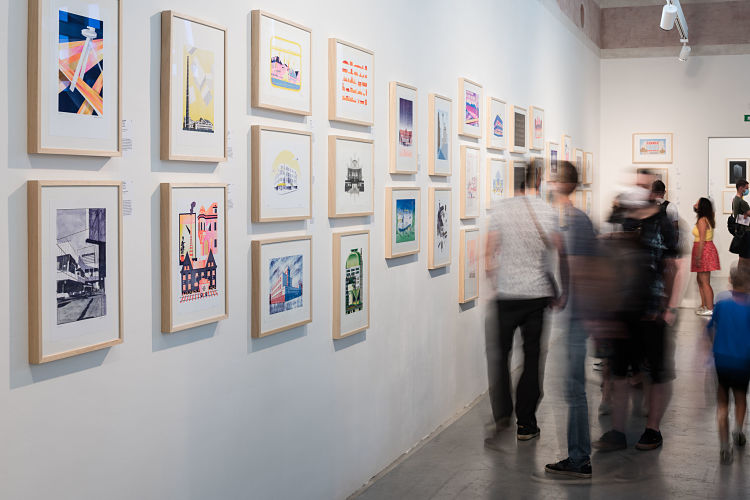
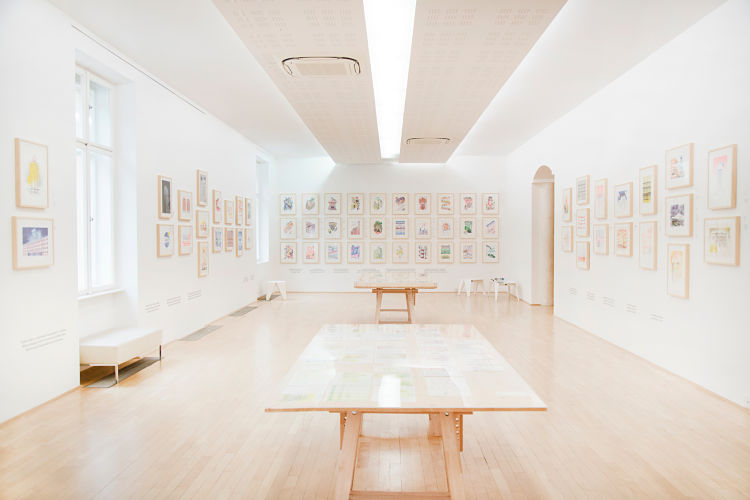
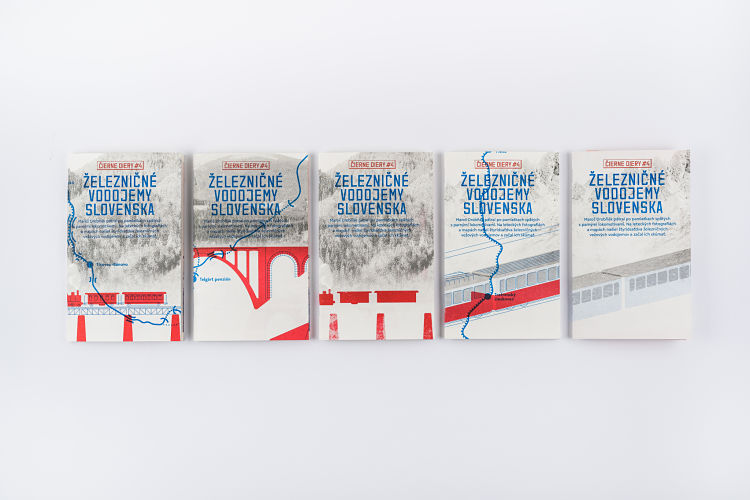 Aside from travelling and collecting stories, the members of the project run an independent Risograph studio based in the community centre of Nová Cvernovka in Bratislava. The Riso brand (led by graphic and type designer Michal Tornyai) was born in a design studio in 2015. Here, a colleague-designer, Ondrej Gavalda, introduced the risographic technique to Michal, who came across an offer to buy a used 2001 Riso RP3700 machine at a bazaar. They dove into it together with Radko Čepček, not knowing anything about printing technologies. It started with a couple of architectural prints, and continued with the merging of the initiative and ceasing the Risomat as a separate brand. What was once a hobby became a hit. After years of creative work and exhausting repairs, Čierne diery passed their old machine to another punk community in Trnava, Slovakia, and acquired brand new two-drum Riso MF9350 for themselves.
Aside from travelling and collecting stories, the members of the project run an independent Risograph studio based in the community centre of Nová Cvernovka in Bratislava. The Riso brand (led by graphic and type designer Michal Tornyai) was born in a design studio in 2015. Here, a colleague-designer, Ondrej Gavalda, introduced the risographic technique to Michal, who came across an offer to buy a used 2001 Riso RP3700 machine at a bazaar. They dove into it together with Radko Čepček, not knowing anything about printing technologies. It started with a couple of architectural prints, and continued with the merging of the initiative and ceasing the Risomat as a separate brand. What was once a hobby became a hit. After years of creative work and exhausting repairs, Čierne diery passed their old machine to another punk community in Trnava, Slovakia, and acquired brand new two-drum Riso MF9350 for themselves.
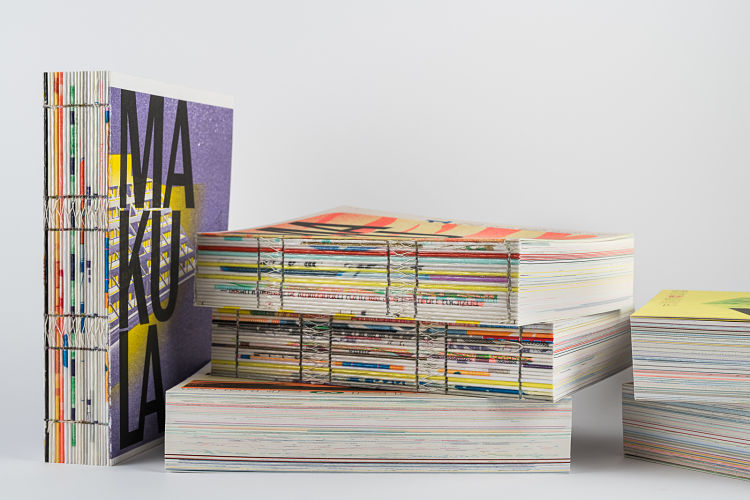 Čierne diery emphasise high importance in the social function of the graphic, with their graphic prints available and affordable for a far-reaching audience. This provides the opportunity for everyone to create personal relationships with these places, get involved in the promotion of local history, and the stories of neighbours. Since the demand for their prints is so high, with their graphics often selling out within minutes online, not everyone who wanted a print has always been able to purchase one. From the beginning, the number of prints they produce, at most 200 per edition, has had a direct impact on the designer fees, whether they are an illustration student, or established artist willing to join a good cause. The project was set up to be profitable for all parties, with the retail price of each Riso print set at 20 Euros and 25 Euros with VAT respectively. By design, each print author receives the same fee according to the number of sales.
Čierne diery emphasise high importance in the social function of the graphic, with their graphic prints available and affordable for a far-reaching audience. This provides the opportunity for everyone to create personal relationships with these places, get involved in the promotion of local history, and the stories of neighbours. Since the demand for their prints is so high, with their graphics often selling out within minutes online, not everyone who wanted a print has always been able to purchase one. From the beginning, the number of prints they produce, at most 200 per edition, has had a direct impact on the designer fees, whether they are an illustration student, or established artist willing to join a good cause. The project was set up to be profitable for all parties, with the retail price of each Riso print set at 20 Euros and 25 Euros with VAT respectively. By design, each print author receives the same fee according to the number of sales.
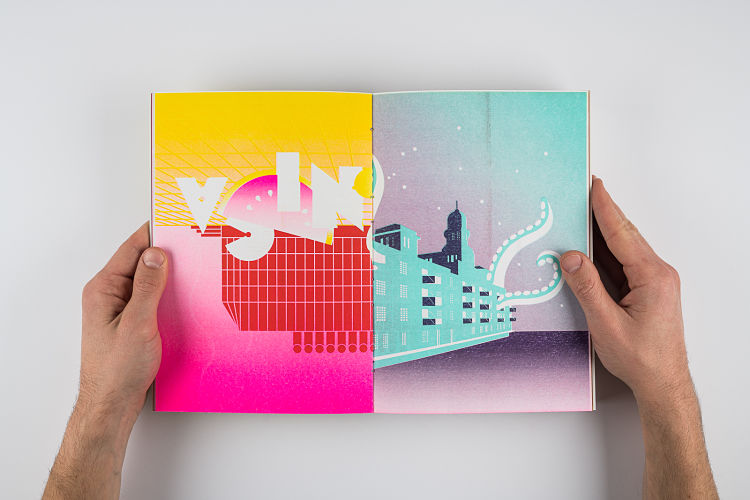
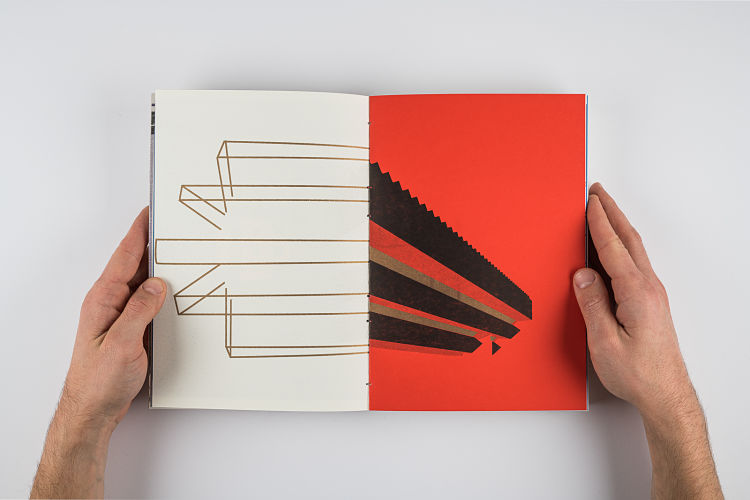 Čierne diery has continued to back this philosophy, creating works in limited numbers, even with high demand. They ended their personal sales at events after that thousands of people started attending, knowing they couldn’t meet such high demand. Instead, they concentrated on accessibility and affordability in parallel with uniqueness. To preserve independence and freedom, they create at their own pace, in their original composition, and with their own challenges. Their prints have even become so sought after that collectors have compiled their own lists of works and a network of contacts, organising and attending swaps. These contacts have become connections, strengthened by the graphic and the community created around them. Friendships have blossomed, and people have become willing to donate their graphics to a good cause, resulting in a community of like-minded but very diverse people who truly care about the cause.
Čierne diery has continued to back this philosophy, creating works in limited numbers, even with high demand. They ended their personal sales at events after that thousands of people started attending, knowing they couldn’t meet such high demand. Instead, they concentrated on accessibility and affordability in parallel with uniqueness. To preserve independence and freedom, they create at their own pace, in their original composition, and with their own challenges. Their prints have even become so sought after that collectors have compiled their own lists of works and a network of contacts, organising and attending swaps. These contacts have become connections, strengthened by the graphic and the community created around them. Friendships have blossomed, and people have become willing to donate their graphics to a good cause, resulting in a community of like-minded but very diverse people who truly care about the cause.
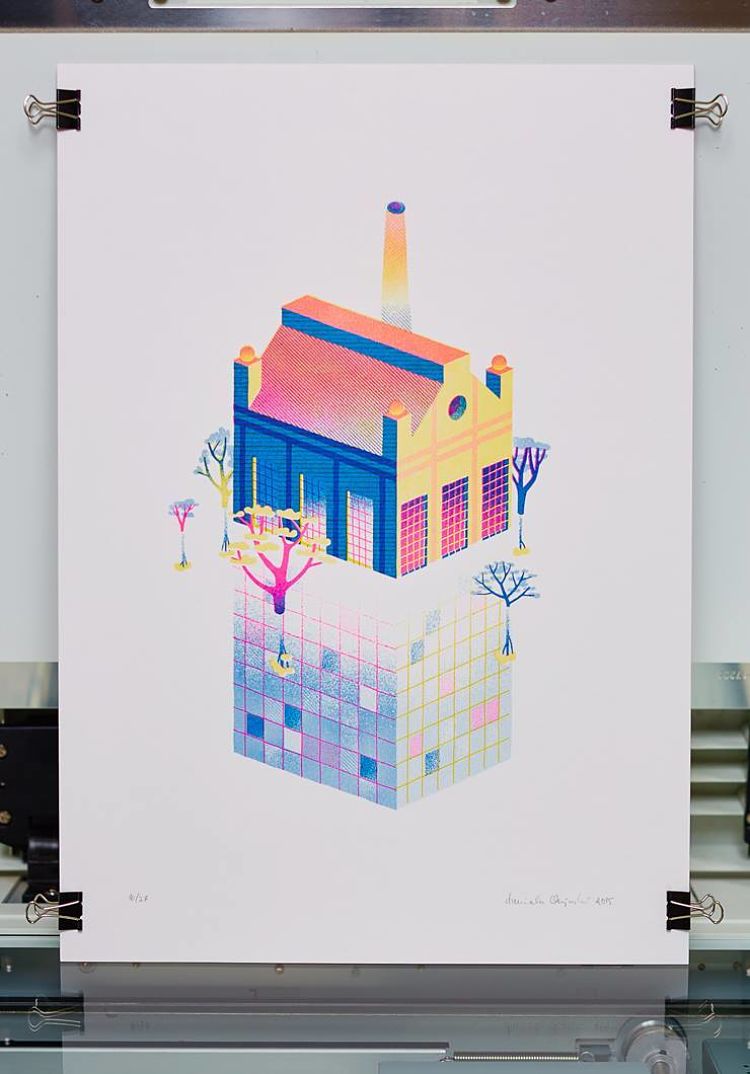 In addition to their creative and charitable activities for cultural and industrial monuments, Čierne Diery hope to keep raising awareness for the various crucial issues in society. As such, they continue to provide financial, legal, and architectural support to institutions, initiatives, and individuals. In 2020, around 200,000 euros was sent to organisations working with the homeless, health workers, and various cultural heritage sites and institutions, to name a few. This included raising 20,000 euros for a new boiler room in the independent cultural and creative centre Kláštor (Monastery), and the repair of the Chamkova barn.
In addition to their creative and charitable activities for cultural and industrial monuments, Čierne Diery hope to keep raising awareness for the various crucial issues in society. As such, they continue to provide financial, legal, and architectural support to institutions, initiatives, and individuals. In 2020, around 200,000 euros was sent to organisations working with the homeless, health workers, and various cultural heritage sites and institutions, to name a few. This included raising 20,000 euros for a new boiler room in the independent cultural and creative centre Kláštor (Monastery), and the repair of the Chamkova barn.
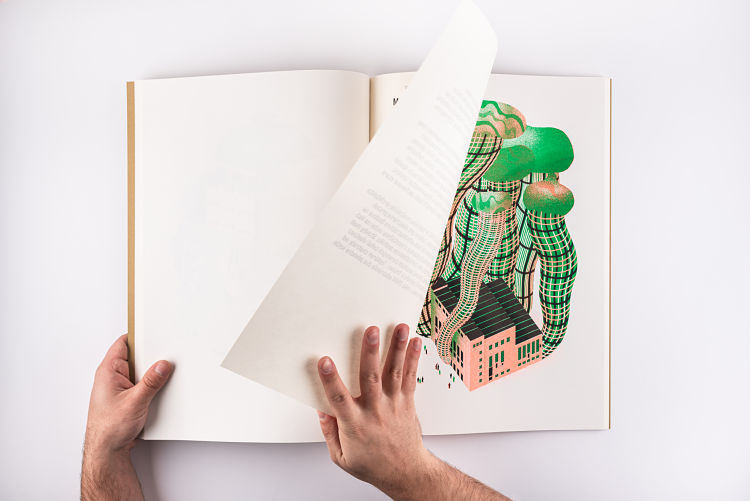
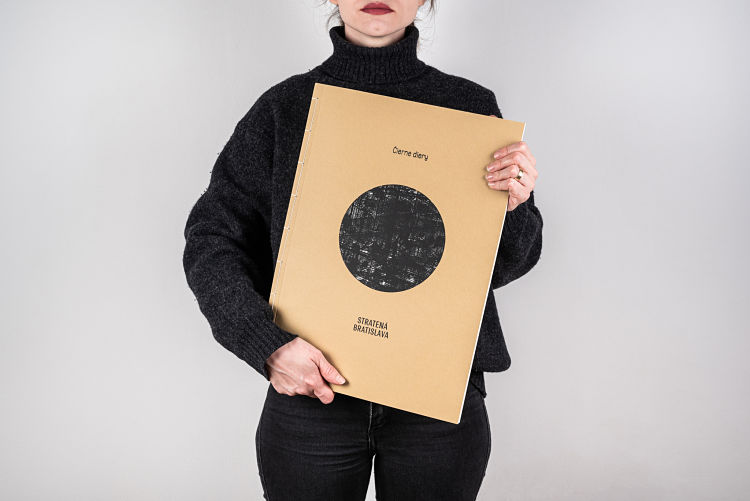 Recently, Čierne diery have rented a manor house in Jelšava for a new project where they are planning to provide experiential accommodation accessible to everyone able to book for free or a voluntary contribution. They have also bought an old miners’s house to repair for themselves and offer for public rental. All of this was possible without any commercial partners, thanks to a large community of supporters. By sharing various initiatives on social media, projects struggling to raise enough money for good causes can have their goals reached with the help of Čierne Diery. Once an underground movement, they have now have mainstream influence, winning multiple awards for their design and charitable work, and providing concrete financial help to revive monuments and support various charities.
Recently, Čierne diery have rented a manor house in Jelšava for a new project where they are planning to provide experiential accommodation accessible to everyone able to book for free or a voluntary contribution. They have also bought an old miners’s house to repair for themselves and offer for public rental. All of this was possible without any commercial partners, thanks to a large community of supporters. By sharing various initiatives on social media, projects struggling to raise enough money for good causes can have their goals reached with the help of Čierne Diery. Once an underground movement, they have now have mainstream influence, winning multiple awards for their design and charitable work, and providing concrete financial help to revive monuments and support various charities.
You might like...
- Enea Seregni | MONSTERS! Collectible Cards - April 19, 2024
- Mark Frendo | Danger UXARD - April 18, 2024
- Sue Lewry | The Creative Cycle - April 17, 2024

